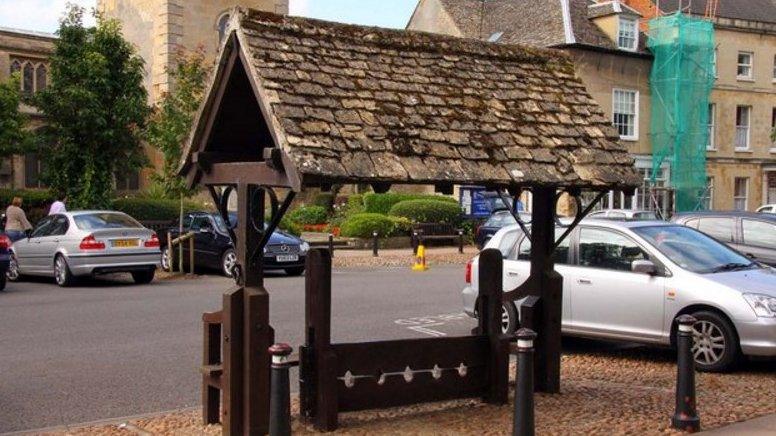A ghoulish tour of medieval punishments
- Published

Is there anything quite as chillingly middle-English as a head swinging mournfully from a set of gallows, silhouetted over some rugged and desolate moorland?
The Oxfordshire town of Thame has announced it is considering bringing back stocks as a tourist attraction, but which other settlements have kept their instruments of medieval correction?
Stocks date back to at least the time of the Black Death in the 14th Century. Labourers were banned from leaving their homes to find better wages elsewhere and those who broke the law were put in stocks.
Every town or village was required by law to have a set. But being put in the stocks was a fairly minor punishment. Many places had whipping posts, pillories and even gallows.
Here's a ghoulish tour of England's harsh past.

Stocks
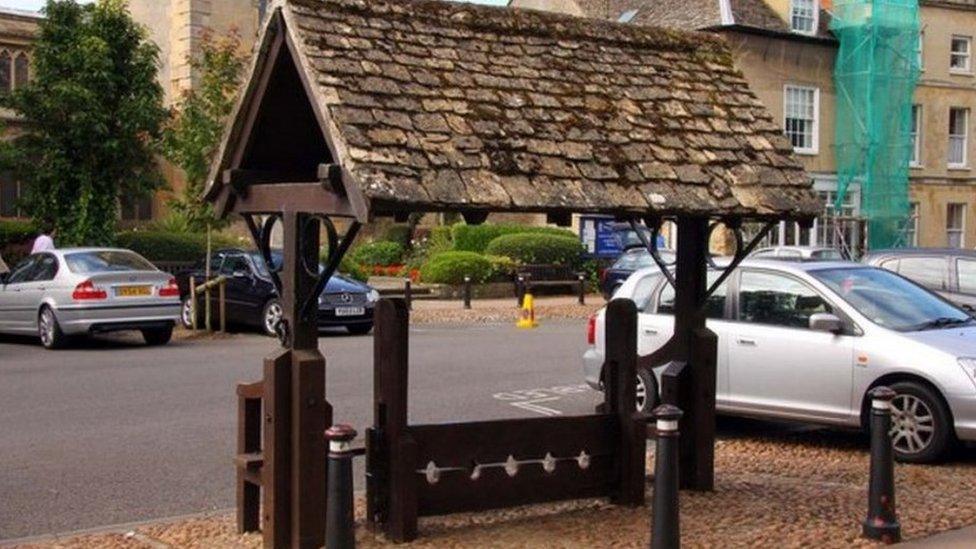
The appropriately named Oxfordshire town of Woodstock has wooden stocks - oddly with five leg holes
Stocks were used to hold the legs of miscreants - usually vagabonds or drunkards - while people threw rotten vegetables at them.
Some places specified only "soft material" was thrown, effectively preventing victims from being stoned (or potatoed?) to death.
David Bretherton, the driving force behind Thame's whimsy, insists being put in the stocks wasn't always nasty.
"If the person was well-liked they might have been showered with flowers. In other cases, they would have had their shoes and socks removed and their feet tickled."
Most stocks were wooden and therefore susceptible to rot - although in some villages they were metallic.
Iron stocks in West Derby village were placed in their current position in 1902 to commemorate the coronation of Edward VII, which is a tribute rarely seen today.
The phrase "laughing stock" - defined by the Oxford English Dictionary as "an object of general ridicule" probably didn't originate from the use of stocks, etymologists say.
A "stock" in that sense was an archaic word for a branchless tree stump or post and came to represent a person who was laughed at.

The original wooden stocks in West Derby rotted and were replaced with iron ones

Pillories
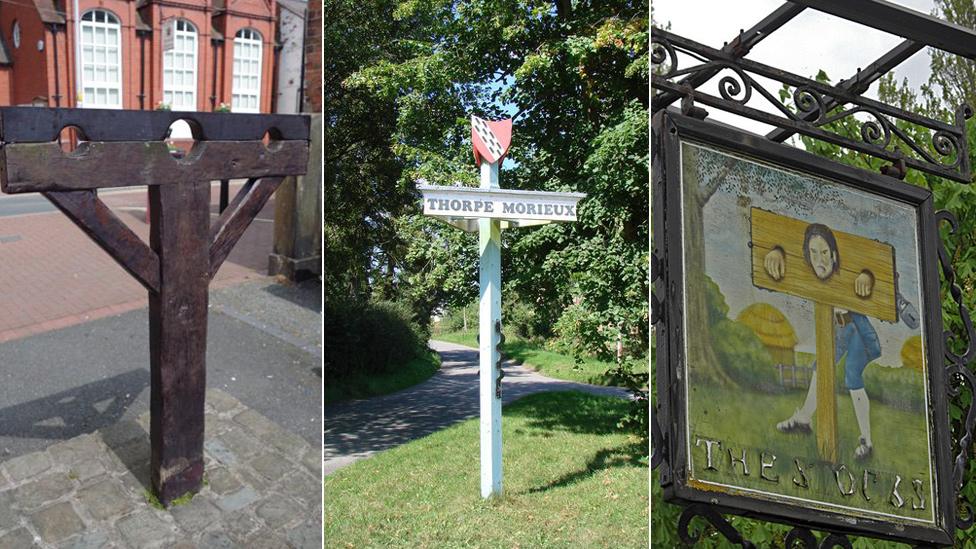
Nantwich in Cheshire still has a pillory in the centre, while the village sign in Thorpe Morieux, Suffolk, doubled up as a pillory (you can see the wrist restraints). The sign outside the Stocks Inn in Furzehill, Dorset actually depicts a pillory
Often confused with stocks, pillories are further up the medieval punishment rankings. Whereas stocks hold the legs, pillories hold the neck and wrists.
Writer Daniel Defoe was put in a pillory on three days in July 1703, following the publication of The Shortest Way with the Dissenters, which was deemed seditious libel.
According to History Today's, external Richard Cavendish, Defoe "was put for an hour each time in three of the busiest places in London - outside the Royal Exchange in Cornhill (near his own home), near the conduit in Cheapside and finally in Fleet Street by Temple Bar.
"It seems to have been raining steadily most of the time, which though uncomfortable would have kept the crowds down, and the experience proved more of a triumph than an ordeal," he says.
"All that was thrown at him were flowers while his friends sold the spectators copies of The Shortest Way and [a new work] A Hymn to the Pillory which he had composed for the occasion."
Defoe's experience, though, was atypical. Some people, having been pelted with dead cats and dogs, stones, saucepans and other missiles - as well as rotten fruit and eggs - were maimed or even killed, Mr Cavendish says.

Gallows

Winters Gibbet in Northumberland is a grisly reminder of a brutal murder
A gibbet can be any instrument of public execution, including guillotine, executioner's block, impalement stake, hanging gallows, or related scaffold, but "gibbeting" is specifically using a gallows to display the body of an executed criminal. Winter's Gibbet in Elsdon, in Northumberland, is where a man called William Winter was suspended in chains after being hanged in Newcastle in 1792 for the murder of an old woman.
Apparently, his rotting corpse dangled there for many years, until the structure fell apart. In 1867 a replica was built on the site, complete with a wooden mannequin. The body was stolen but a wooden head remained until it too went missing. Now a short chain is all that remains.
Pieces of the gibbet were once reputed to be able to cure toothache, if rubbed on the gums.
The remains of an original set of gallows can be seen in Potsford Woods near Wickham Market in Suffolk.
The story goes that a Jonah Snell bludgeoned to death a man and his son while they were working. When he was captured he was still carrying the murder weapon and was sentenced to death.
Reports claim that he was dragged up to the hanging frame on his back, giving the name "Dragarse" to the hill on which it stands.
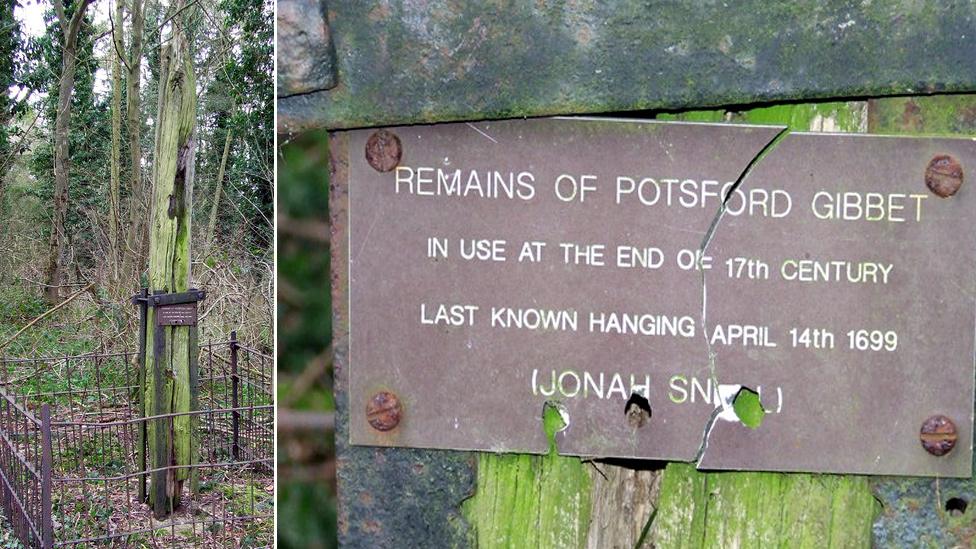
Less impressive visually than Winters Gibbet, the Potsford Gibbet was last used to hang a man who bludgeoned a man and his son to death

Guillotine

And off with their heads...
There's a replica guillotine in Halifax, which harks back to the time when the town was a major producer of cloth.
The fabric had to be dried in the open air and was therefore easy to steal, so as a deterrent the crime became punishable by death in some cases.
The theft of items above a certain value led to a beheading. Between 1541 and 1650, 53 men and women were executed this way.
The replica was built in 1974 on the original site in Gibbet Street. A casting from the original blade is on display at the Bankfield Museum in Boothtown.
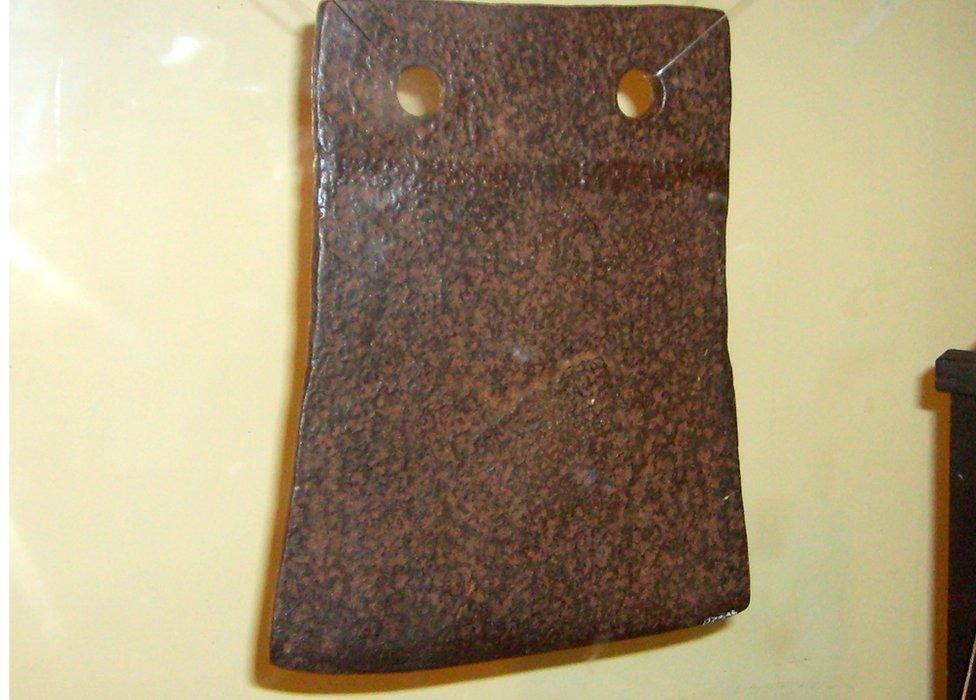
A casting of the original Halifax head-chopper-offer is on display at a local museum

Ducking stools and cucking stools
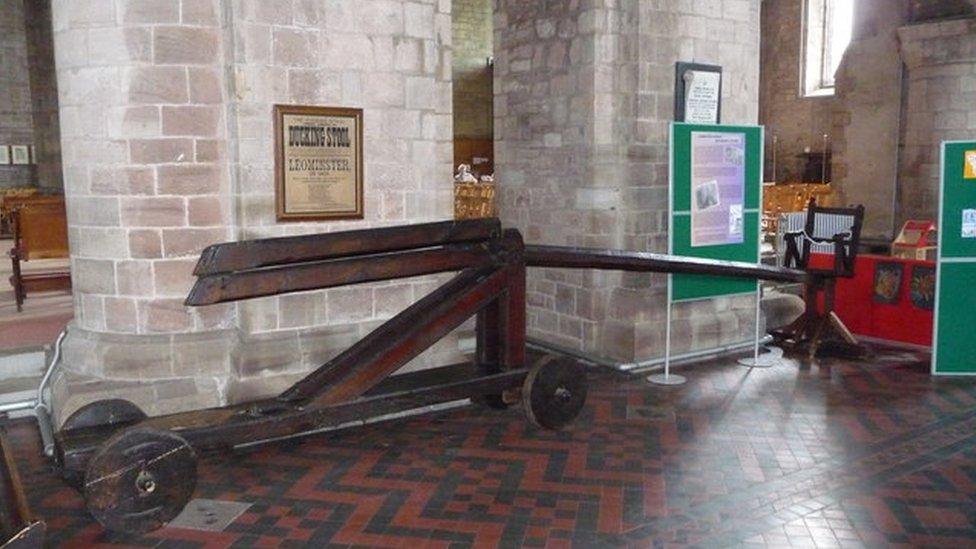
It might look fun, but probably wasn't
A complete ducking stool is on display in Leominster Priory, external, Herefordshire, and the people of the town are so taken with the idea that the town clock, commissioned for the millennium, features a moving ducking stool depiction.
It was a wooden or iron armchair on to which the culprit was strapped. The chair was attached to a long wooden beam, usually located alongside a pond or river, and was lowered into the water.
The last recorded ducking cases in England are both from Leominster. Jenny Pipes, a notorious scold, was dunked in 1809. By 1817, the water in the ducking pond was so low Sarah Leeke was merely wheeled round the town in the chair.

Leominster folk are so pleased about their ducking stool they had it portrayed on the town clock - although originally the apparatus wasn't operated by giant lions
The tumbrel (the wagonny bit) of a ducking stool is in the crypt of the Collegiate Church of St Mary, Warwick.
There is also a ducking chair in Canterbury where the High Street meets the River Stour.
Geoffrey Abbott, author of Book of Execution, Rack, Rope, and Red-Hot Pincers, says: "Repeated duckings routinely proved fatal, the victim dying of shock or drowning."
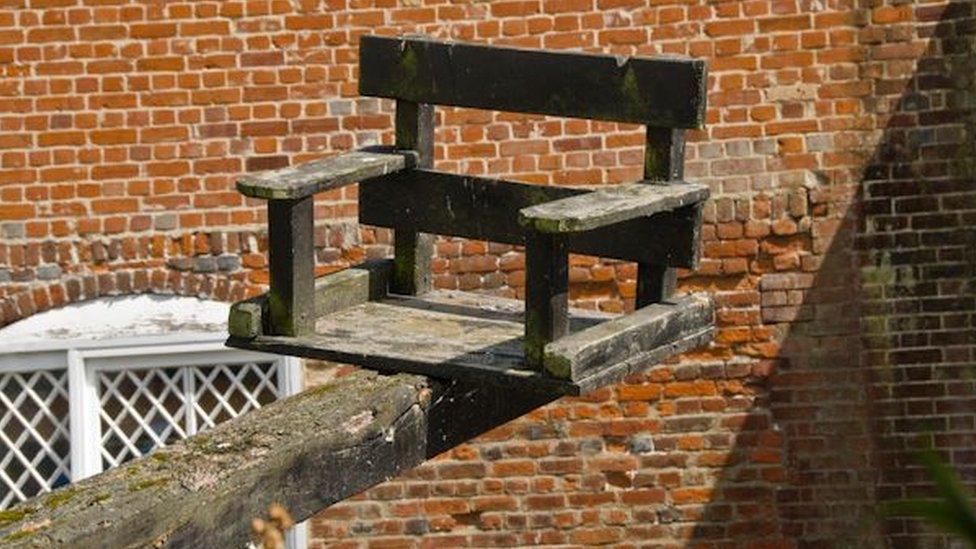
An original ducking chair remains on the river in Canterbury
A replica ducking stool can be seen (and posed next to) in Ducking Stool Lane in Christchurch, Dorset.
There was also an instrument called a cucking stool - alternatively known as a "scolding stool" or a "stool of repentance". It was a chair placed in public view, upon which the targeted person was forced to sit while being paraded through the town.
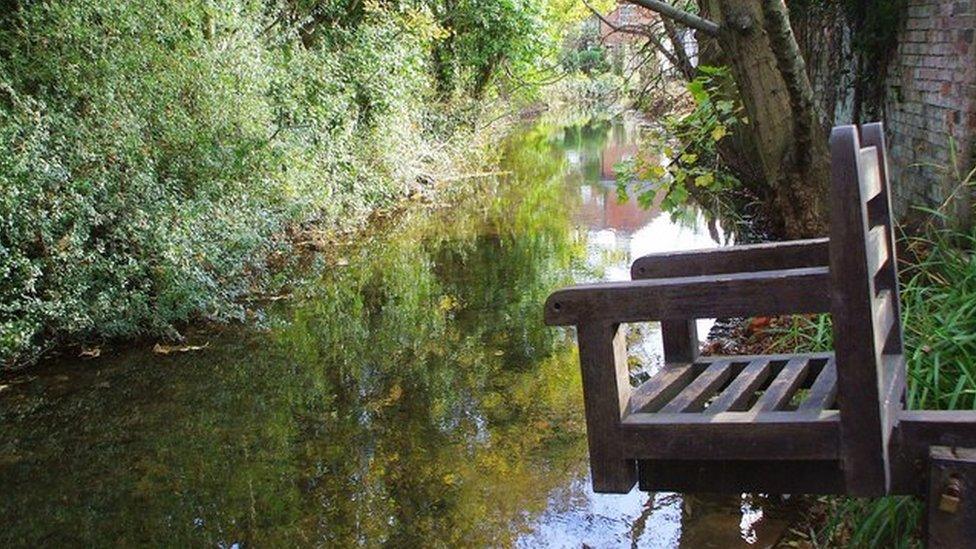
It looks like a nice peaceful place to rest, but beware...

Whipping posts
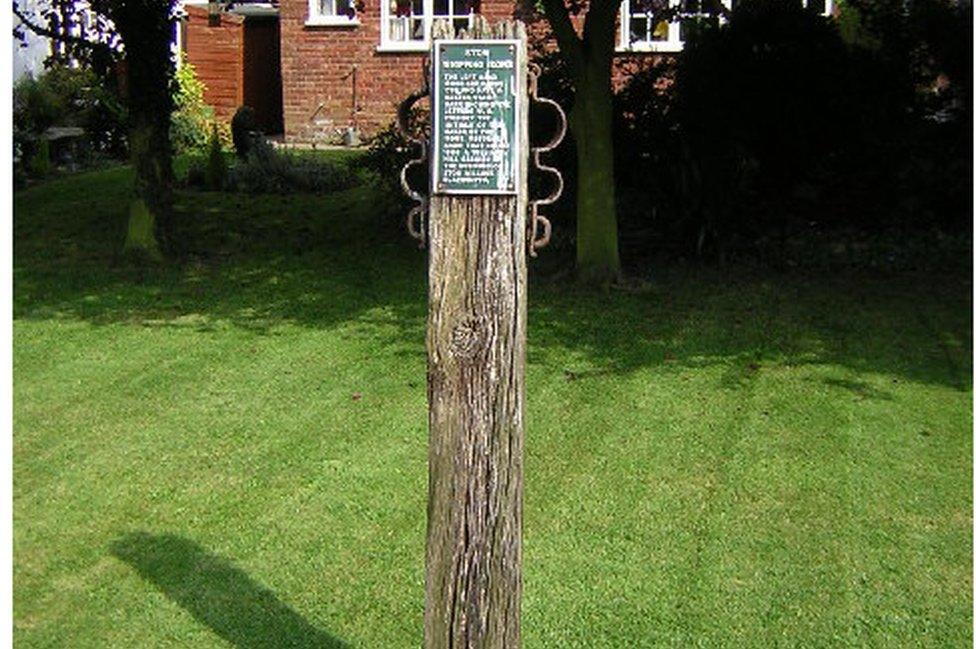
The irons on a whipping post in Stow have a maker's stamp mark dated 1789
The village of Stow in Lincolnshire still has a whipping post situated near the church.
While the people of Norton in Shropshire were clearly of an efficient bent, as they combined their stocks and whipping post.
They are opposite the building, which was used as the court in medieval times.
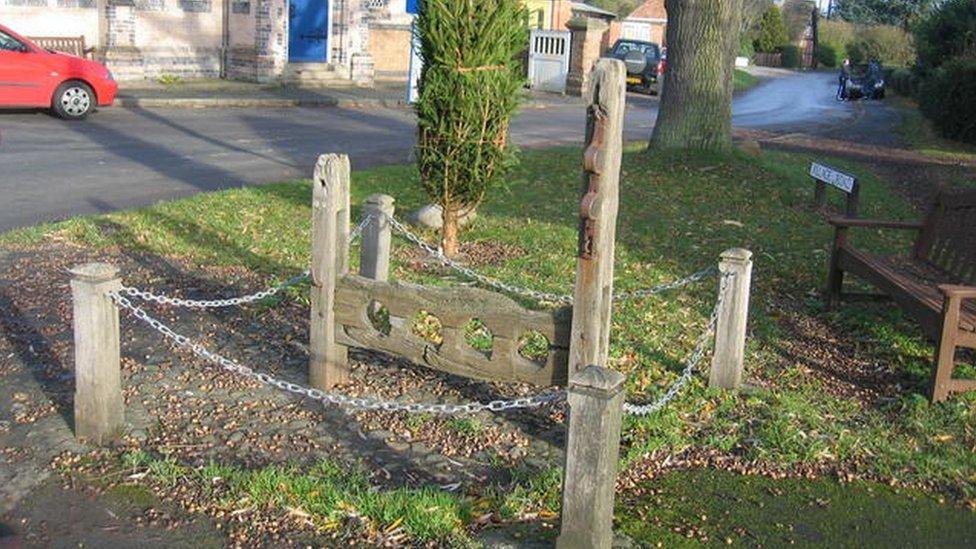
The stocks and whipping posts in Norton are chained off, presumably to deter charity fundraisers brandishing wet sponges
- Published28 June 2016
